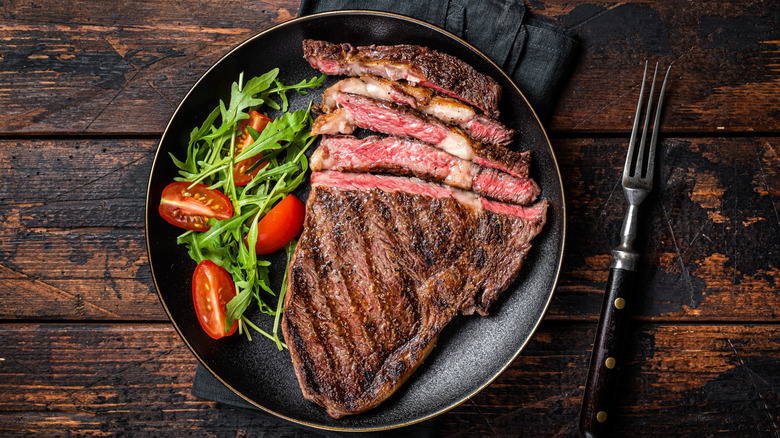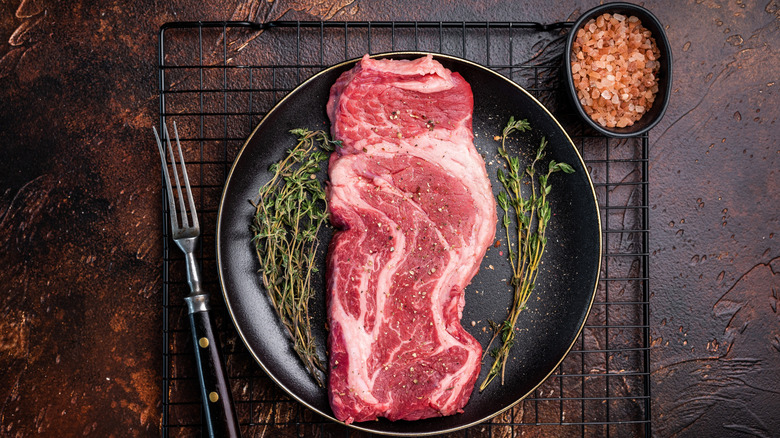How To Get Steakhouse Results From The 'Poor Man's Ribeye'
Ribeye steaks can fetch a hefty price tag, but you can accomplish similar results with a cut affectionately known as the "poor man's ribeye" — chuck eye steak. The ribeye proper is pulled right from the cow's ribs and is known for its high marbling content, tender texture, and buttery flavor. The chuck eye is pulled from the same muscle as ribeye but is located farther up the cow's shoulder. It also has healthy marbling and a soft texture but comes at about half the price of its more well-known sibling.
Traditionally, chuck roasts require a long, slow cook to become tender (you've probably used chuck roast for beef stew). Since the chuck eye has some of the marbling and muscle of a ribeye, it holds up to the quick, high-heat cooking methods you'd traditionally use for the latter.
Generally, any of your favorite ways to cook a ribeye can work with a chuck eye — pan-searing the steak and grilling it are especially strong candidates. However, the comparably lower fat content means that the chuck eye isn't as forgiving as the ribeye. It requires you to carefully monitor the steak's resting time both before and after cooking for steakhouse-quality beef.
Tips for perfect chuck eye steaks
Cooking chuck eye steak is simple, but that also means that there's no room for mistakes. After correctly adding your dry rub, the key to a perfect chuck eye is patience. First, let your seasonings absorb into and tenderize the meat for at least an hour in the fridge. Where the upper limit sits is up for debate, but up to 24 hours is a good cutoff point for giving you a firm crust without altering the steak's structure. From there, give your chuck eye a quick sear or grill and let it come to your desired doneness.
When the meat is ready, don't sacrifice your hard work by slicing into your chuck eye as soon as it's off the heat. Resting the meat for 5 to 10 minutes (or 15 to 20 for a larger cut) allows the juices to redistribute and keeps the meat moist even after you cut it. A well-rested chuck eye can be as juicy as a proper ribeye, but cutting it too soon can make it feel more like a tough chuck cut. This might seem like an abundance of waiting, but this process will guarantee a succulent steak that leaves your wallet a bit heavier than a classic ribeye would.

